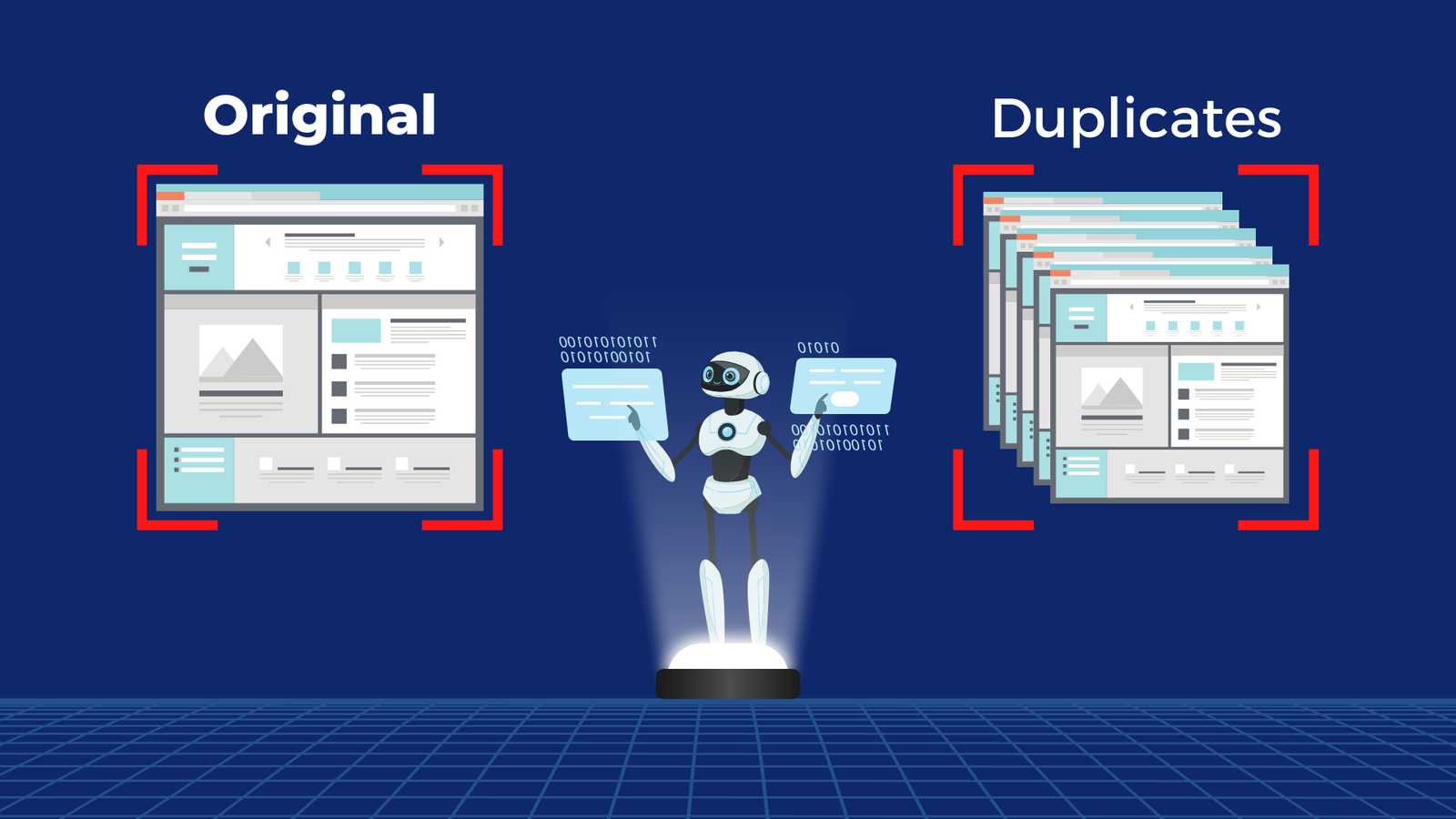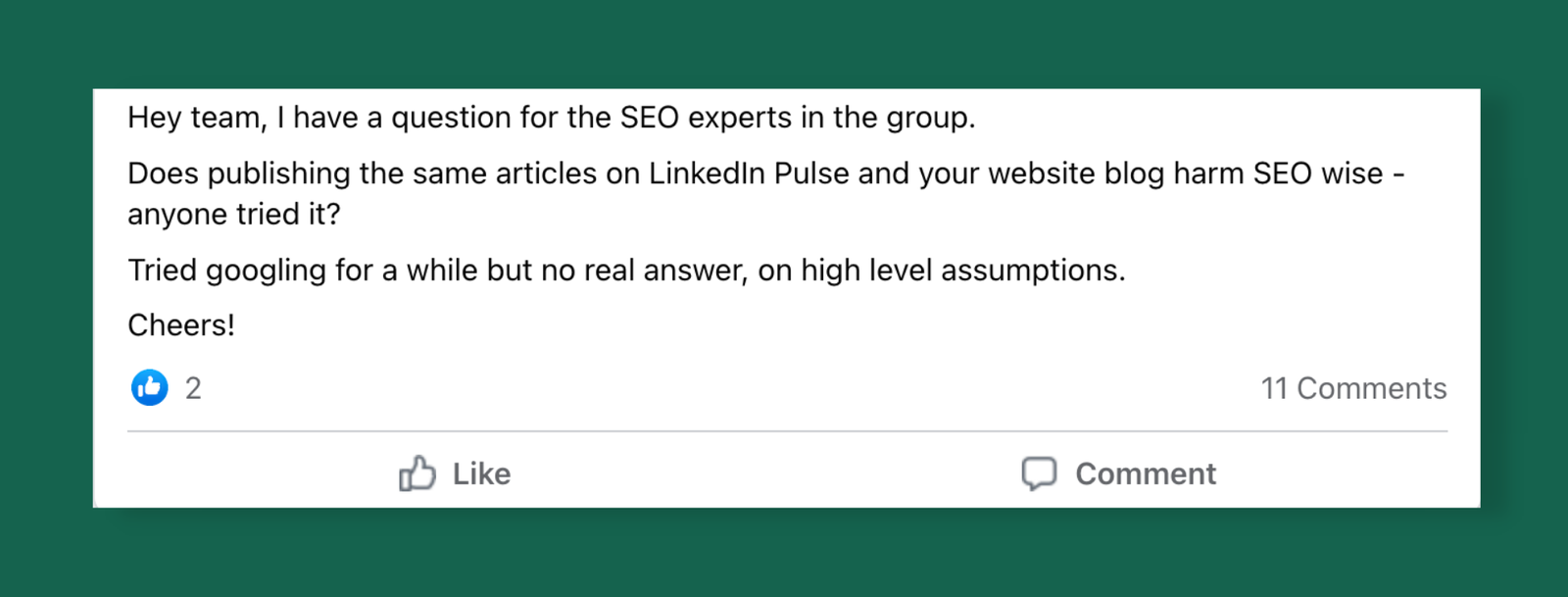
What is Duplicate Content?
Duplicate content is when the same content copy appears on more than one page. This can occur either on your site or another site you do not control.
We recently received a question from our marketing group regarding duplicate content, which is a topic that has a lot of speculation floating around the internet.

So is there such a thing as a duplicate content penalty?
Plain and simple… no. You will never see any notification from your Google Search Console that you have been penalized for duplicate content.
Drawbacks of Duplicate Content
Even though there is no formal “penalty” for duplicate content does not mean that there aren’t any drawbacks. Here’s our answer to the initial question in our marketing group:

Google’s John Mueller also explained, “With that kind of duplicate content, it’s not so much that there’s a negative score associated with it. It’s more that, if we find exactly the same information on multiple pages on the web, and someone searches specifically for that piece of information, then we’ll try to find the best matching page.”
This means that Google’s algorithm will decide which content to rank, and often may choose the wrong content. This can be compared to a crossroads with road signs in two different directions, both with the same destination. Which road should you take? Your hard work may all go to waste if Google chooses to rank the wrong page!
Check for Duplicate Content
You should continuously check for duplicate content, not just on your own site. Duplicate content can also arise when someone else takes your content and publishes it as their own. Set up a schedule to monitor this, or use tools to automatically monitor duplicate content.
Some popular tools include Semrush, Copyscape, and Grammarly. Though these tools may not be explicitly designed for finding duplicate content, they still work great to accomplish it.
How to Address Duplicate Content Issues
Once you find the duplicate content, you can proactively take these steps to address the issues and ensure that visitors see the content you want them to see.
- Use 301 redirects in your .htaaccess file to redirect users, Googlebot, and other spiders to the appropriate page. This is especially important if you’ve restructured your site.
- Use a canonical tag. This is a tag that specifies which page is the original content and that the other pages are just duplicates. By using this tag, you are telling Google which page you want to be displayed on the search results.
- Be consistent with your internal linking. For instance, avoid linking to https://marketandgrow.com/blog/ and https://marketandgrow.com/blog and https://marketandgrow.com/Blog. For Google, URLs are case sensitive and affected by trailing slashes, so choose one format and stick with it.
- Don’t publish placeholders. If you are using a duplicate just as a placeholder for content that is not ready yet, use the noindex tag to block these pages from being indexed.
- Minimize similar content. If you have many similar pages, consider rewriting and expanding the pages. It is typically better to have a different writer, so the content has a different style and does not come out stiff. In addition, you can consolidate the pages into one. For instance, if you have a cooking site with two separate recipes for the same dish, you could merge the two pages into one page with both recipes.
- Contact site host to remove content. If you believe that another site is duplicating your content without your permission, you can contact the site host to request removal. You can also request that Google remove the page from the search results by filing a request under the Digital Millennium Copyright Act.
Conclusion
Do not believe anecdotal tales of duplicate content harming SEO, but rather listen to what Google is telling us. If you have many duplicate content pages, it may take some time to go through everything and fix it all. Go through these pages and recreate unique and authoritative content, which can often be done by employing fresh writers.
Your content marketing strategy is more crucial than ever in 2022. Implementing a robust content marketing plan can help fuel your business’ growth if executed the right way.

